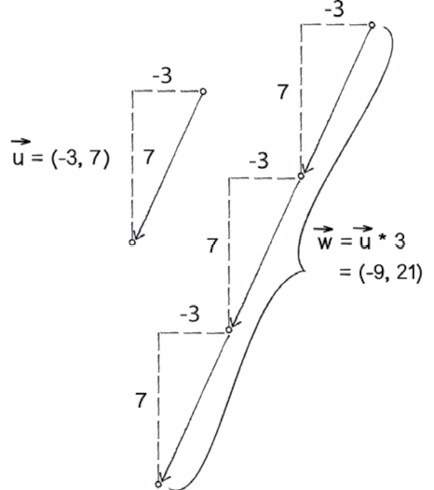99
Technical Research |Abstracting the Human Systems
98
Technical Research |Abstracting the Human Systems
add() — add vectors
sub() — subtract vectors
mult() — scale the vector with multiplication
div() — scale the vector with division
mag() — calculate the magnitude of a vector
setMag() - set the magnitude of a vector
normalize() — normalize the vector to a unit length of 1
limit() — limit the magnitude of a vector
heading() — the 2D heading of a vector expressed as an angle
rotate() — rotate a 2D vector by an angle
lerp() — linear interpolate to another vector
dist() — the Euclidean distance between two vectors (considered as points)
angleBetween() — find the angle between two vectors
dot() — the dot product of two vectors
cross() — the cross product of two vectors (only relevant in three dimensions)
random2D() - make a random 2D vector
random3D() - make a random 3D vector
A list of Vector operations that can be used within Processing.
These operations can be defined by simple words within processing, but It is important to understand how these operations work to understand how to utilize them within the simulation.
From Shiffman, “Chapter 1. Vectors.”
Vector Multiplication
It can be seen from this figure that multiplying a vector keeps its direction, but increases its length. As such, vector multiplication can be used as a way to scale the magnitude of vectors.
From Shiffman, “Chapter 1. Vectors.”
Vector Addition
adding two vectors together results in a new vector location that is the result of going along each vector individually. As such this can be utilized to update position by adding additional vector forces to it.
From Shiffman, “Chapter 1. Vectors.”
Vector Subtraction
Vector subtraction can be used to calculate the distance between two points, which in turn have many uses within a crowd simulation, such as determining how far away an object is to the agent or calculating a vector that points from the agent to its goal.
From Shiffman, “Chapter 1. Vectors.”
Vector Division
Dividing a vector by a scalar value is similar to multiplying it, except its length is decreased instead of increased. Dividing a vector by itself will normalize a vector and result in a magnitude of 1. This normalized vector can then be scaled by multiplying the vector by a scaler variable in order to control how big a vector can become.
From Shiffman, “Chapter 1. Vectors.”



